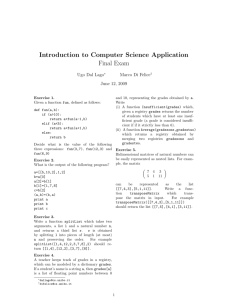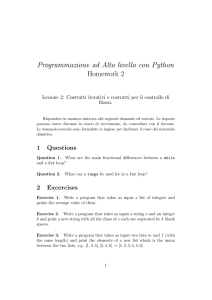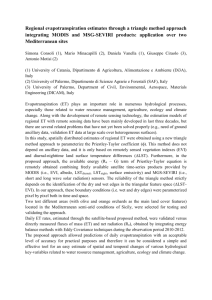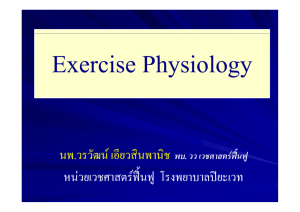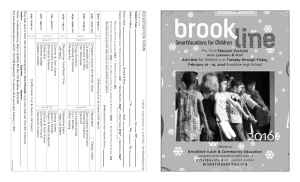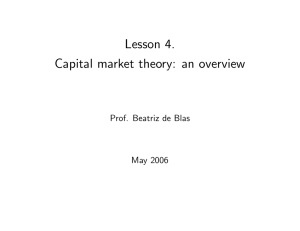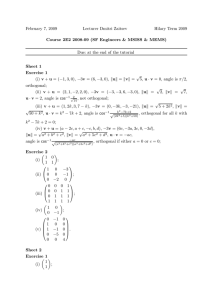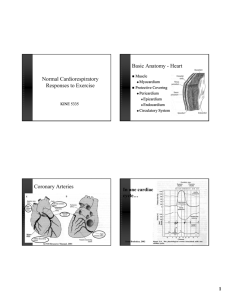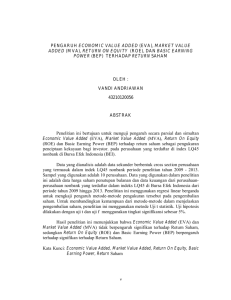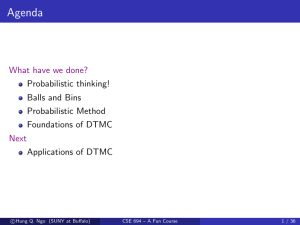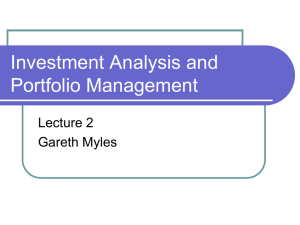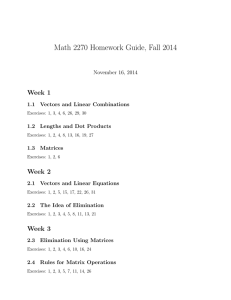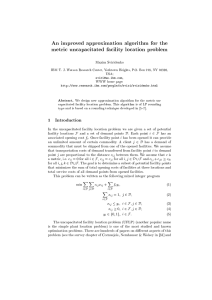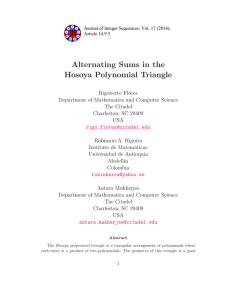Introduction to Computer Science Application Final Exam
advertisement
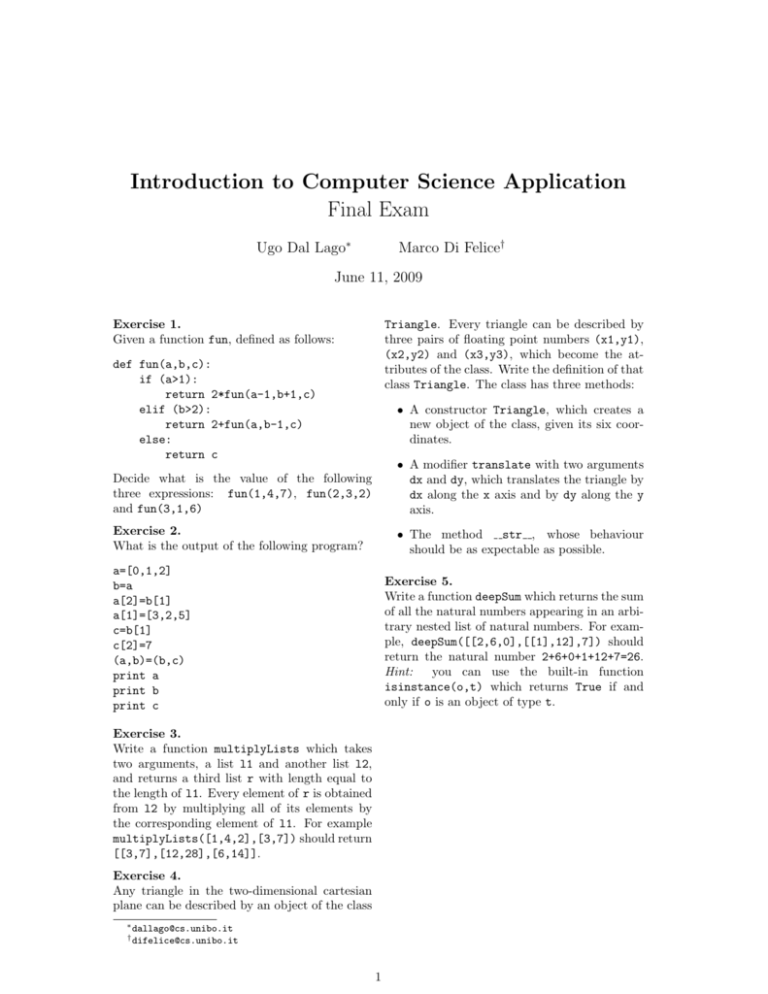
Introduction to Computer Science Application Final Exam Ugo Dal Lago∗ Marco Di Felice† June 11, 2009 Exercise 1. Given a function fun, defined as follows: Triangle. Every triangle can be described by three pairs of floating point numbers (x1,y1), (x2,y2) and (x3,y3), which become the attributes of the class. Write the definition of that class Triangle. The class has three methods: def fun(a,b,c): if (a>1): return 2*fun(a-1,b+1,c) elif (b>2): return 2+fun(a,b-1,c) else: return c • A constructor Triangle, which creates a new object of the class, given its six coordinates. Decide what is the value of the following three expressions: fun(1,4,7), fun(2,3,2) and fun(3,1,6) • A modifier translate with two arguments dx and dy, which translates the triangle by dx along the x axis and by dy along the y axis. Exercise 2. What is the output of the following program? str , whose behaviour • The method should be as expectable as possible. a=[0,1,2] b=a a[2]=b[1] a[1]=[3,2,5] c=b[1] c[2]=7 (a,b)=(b,c) print a print b print c Exercise 5. Write a function deepSum which returns the sum of all the natural numbers appearing in an arbitrary nested list of natural numbers. For example, deepSum([[2,6,0],[[1],12],7]) should return the natural number 2+6+0+1+12+7=26. Hint: you can use the built-in function isinstance(o,t) which returns True if and only if o is an object of type t. Exercise 3. Write a function multiplyLists which takes two arguments, a list l1 and another list l2, and returns a third list r with length equal to the length of l1. Every element of r is obtained from l2 by multiplying all of its elements by the corresponding element of l1. For example multiplyLists([1,4,2],[3,7]) should return [[3,7],[12,28],[6,14]]. Exercise 4. Any triangle in the two-dimensional cartesian plane can be described by an object of the class ∗ dallago@cs.unibo.it † difelice@cs.unibo.it 1
